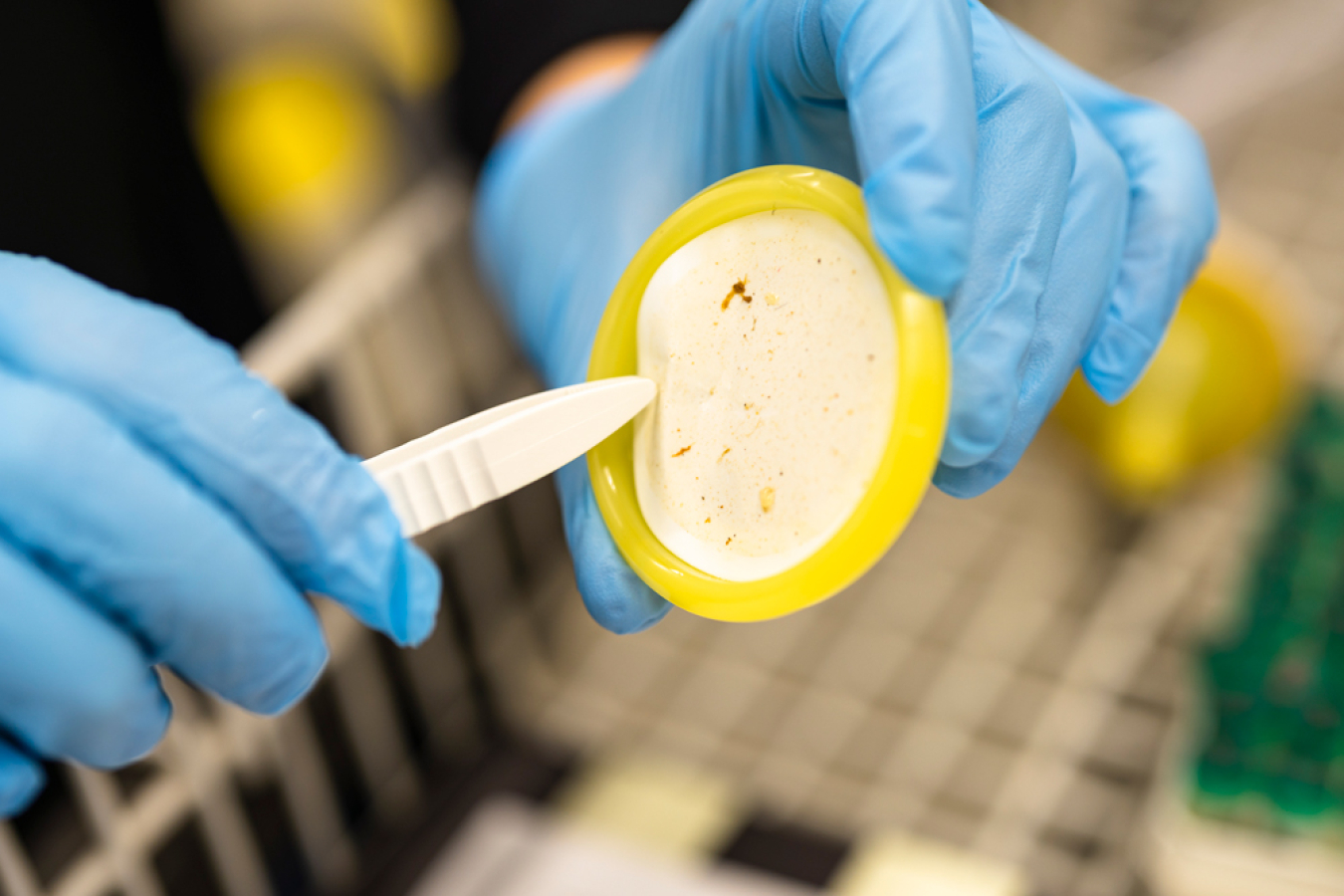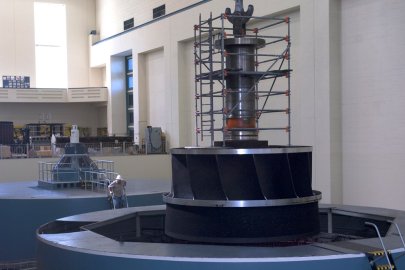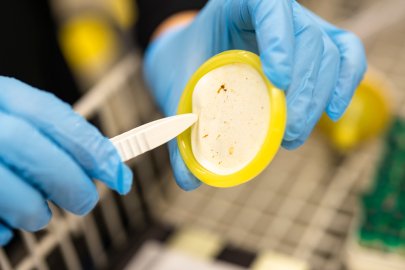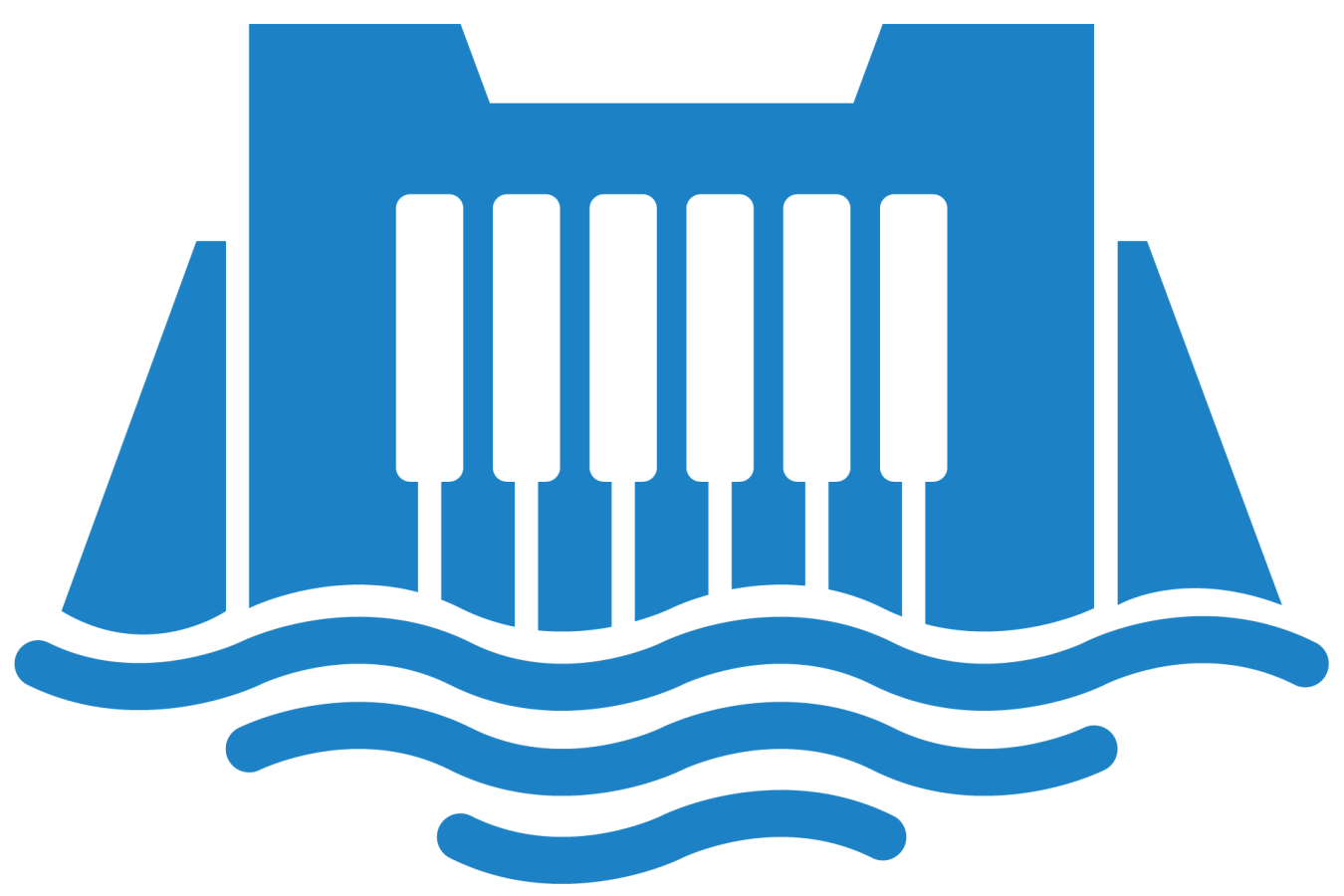Oak Ridge National Laboratory improved upon fish species detection and counting using environmental DNA and RNA sequencing, potentially saving time, decreasing costs, and reducing environmental impacts on aquatic species and habitats.
Water Power Technologies Office
March 14, 2024Hydropower Program
Environmental and Hydrologic Systems Science
Project Name: Environmental DNA (eDNA) Applications in Hydropower Fish Passageways
Project Team: Oak Ridge National Laboratory (lead) and Michigan Department of Natural Resources
Lead Recipient Location: Oak Ridge, Tennessee, with testing conducted at five hydropower facilities in Michigan

Researchers at Oak Ridge National Laboratory (ORNL) improved the resolution and accuracy of a noninvasive approach for detecting fish near hydropower facilities. This approach involves collecting and analyzing RNA and DNA (genetic material present in nearly all living organisms and released into the environment) from water samples collected in fish passage structures.
Fish passages have many designs, such as ladders and lifts, and are designed to help fish move through hydropower facilities. By comparing the genetic signatures of fish found in water samples to visual counts of fish at fish passage viewing windows, the team was able to identify species and estimate the number of fish moving through a fish passage with 98% accuracy. These findings show that environmental RNA (eRNA) can be just as effective as manual methods of fish counting, thereby saving time, decreasing costs, and ensuring safety of the personnel tasked with manual collecting and counting while also supporting efforts to protect fish and their habitats.
Counting fish is an important and often legal requirement that helps monitor and determine the environmental impacts of hydropower facilities on local ecosystems. Conventional biomonitoring often involves a time-consuming and expensive process of manually catching and identifying fish or passive monitoring through viewing windows that may be hindered by water clarity, daylight hours, and other conditions.

Collecting and sampling eDNA and eRNA from waterways both outside hydropower facilities and within fish passages offers a reliable, cost-saving method of fulfilling legal requirements and safeguarding aquatic species.
To secure DNA and RNA samples, ORNL's researchers instead used a proprietary sampler to noninvasively filter water and collect environmental DNA (eDNA) and eRNA shed into the water from fish waste, reproduction, and death. Once the eDNA and eRNA is extracted, the genetic code is sequenced and compared to publicly available DNA and RNA sequences of known species to enable identification.
ORNL conducted comprehensive sampling at five hydropower dams in Michigan over three months in coordination with the Michigan Department of Natural Resources. Researchers compared eDNA and eRNA data to video recordings to determine which fish species and how many were moving through fish passages. The results showed that fish estimates from eDNA samples were not well correlated with visual counts, but estimates from eRNA samples had a near perfect match. Since eRNA is only produced from living organisms and degrades within hours, it provides an accurate snapshot of which species and how many individuals were at a given location recently.
In the past year, ORNL presented findings on its work at the Sustainability in Hydropower Conference in Norway and the American Fisheries Society's annual meeting in North America. The team continues to build partnerships with state and federal agencies, such as the Texas Parks and Wildlife Department and the U.S. Fish and Wildlife Service, to expand their research to other hydropower facilities and aquatic systems. Currently, the team is conducting a study in coordination with the Tennessee Valley Authority, Electric Power Research Institute, and Stantec to look at broader aquatic community composition at Hiwassee Dam in North Carolina and to expand this monitoring approach to other animals and plants, including freshwater mussels, salamanders, and aquatic plants.
-
 Pacific Northwest National Laboratory supported the 25th annual Salmon Summit, an educational event in eastern Washington designed in part to inspire the next generation of hydropower researchers, diverse STEM professionals, and a science-aware community.
Pacific Northwest National Laboratory supported the 25th annual Salmon Summit, an educational event in eastern Washington designed in part to inspire the next generation of hydropower researchers, diverse STEM professionals, and a science-aware community. -
 National laboratory researchers examined and published a report on how climate change may affect water availability for federal hydropower marketing and generation and its impact on future energy demand.
National laboratory researchers examined and published a report on how climate change may affect water availability for federal hydropower marketing and generation and its impact on future energy demand. -
 Researchers used a variety of sampling techniques to consistently and accurately measure methane and carbon emissions from six hydropower reservoirs
Researchers used a variety of sampling techniques to consistently and accurately measure methane and carbon emissions from six hydropower reservoirs -
 A biodegradable and nontoxic hydropower oil has gone through several rounds of testing as its developer aims to ramp up production to achieve commercialization in the next few years.
A biodegradable and nontoxic hydropower oil has gone through several rounds of testing as its developer aims to ramp up production to achieve commercialization in the next few years. -
 Oak Ridge National Laboratory improved upon fish species detection and counting using environmental DNA and RNA sequencing, potentially saving time, decreasing costs, and reducing environmental impacts on aquatic species and habitats.
Oak Ridge National Laboratory improved upon fish species detection and counting using environmental DNA and RNA sequencing, potentially saving time, decreasing costs, and reducing environmental impacts on aquatic species and habitats. -
 A new, nontoxic antibiofouling coating reduced the adhesion of algae, mussels, and larva on flat surfaces, rope, nets, and other materials used in the hydropower and marine energy sectors.
A new, nontoxic antibiofouling coating reduced the adhesion of algae, mussels, and larva on flat surfaces, rope, nets, and other materials used in the hydropower and marine energy sectors.
WPTO's hydropower e-newsletter features news on R&D and applied science to advance sustainable hydropower and pumped-storage technologies.
The WPTO e-newsletter brings funding opportunities, events, publications, & hydropower and marine energy updates directly to your inbox.


